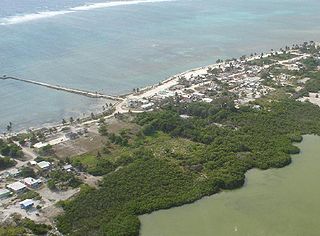Xcalak, located on the southern tip of the Quintana Roo coast in Mexico, offers a unique blend of pristine natural beauty and tranquility that is ideal for travelers seeking an escape from the busier tourist spots. Known for its rich marine life and clear waters, this charming village provides superb opportunities for diving, snorkeling, and fishing. Surrounded by lush mangroves and the famous Mesoamerican Barrier Reef, Xcalak is also a haven for eco-tourism enthusiasts and bird watchers.
Before heading to Xcalak, ensure you have all necessary permits for fishing or diving, as the area is protected to preserve its unique ecosystem.
Booking your stay in advance is recommended, particularly during the high season, as accommodation options in Xcalak are limited but highly sought after.
Top things to do & see in Xcalak
Select the following sights and activities to discover best tickets and tours available in Xcalak.
Xcalak: A Hidden Gem in Mexico’s Caribbean Coast
| Country | Mexico |
| Time in Xcalak | GMT-5 |
| Language spoken | Spanish |
| Population | 400 (source: Latest Census Data) |
| Currency | Mexican Peso (MXN $) |
| Airports |
|
Xcalak, a serene coastal town in Mexico, offers a tranquil escape for those seeking solitude and natural beauty. Situated on the southern tip of the Yucatán Peninsula, right by the Belize border, Xcalak is part of Quintana Roo State and remains one of the last unspoiled stretches of the Mexican Caribbean coast. This secluded paradise remains largely under the radar, making it a delightful discovery for discerning travelers who wish to experience pristine beaches, superb snorkeling, and an authentic taste of local life.
Xcalak’s significance extends beyond its scenic appeal. It lies within the Great Maya Reef, the second-largest barrier reef system in the world. Adventurous souls here can explore vibrant coral formations, an incredible array of marine life, and even historical shipwrecks submerged beneath the turquoise waters. Xcalak is also a stepping stone to Banco Chinchorro, an atoll reef declared a Biosphere Reserve, featuring some of the best diving spots in Mexico.
The history of Xcalak is as rich as its natural surroundings. Originally a fishing village and a coconut plantation, Xcalak evolved through the 20th century and experienced clashes and changes that shaped its present-day community. A testament to resilience, the local population has maintained a strong cultural identity, evident in their traditions, cuisine, and daily life rhythms.
For visitors, Xcalak not only offers a quiet sanctuary but also a chance to engage deeply with ecological tourism. The town’s commitment to conservation is seen in its careful development policies and activities that encourage environmental respect and sustainability. Whether it’s paddling through lagoons to observe bird species or catching a glimpse of the elusive manatees, Xcalak invites all to partake responsibly in its natural treasures.
Where is Xcalak?
Xcalak is found at the southernmost tip of the Yucatan Peninsula, bordering Belize to the south.
What is Xcalak famous for?
Xcalak is renowned for its unspoiled natural beauty, lush wildlife, and proximity to the Mesoamerican Barrier Reef, making it an ideal spot for diving and snorkeling enthusiasts.
History
Pre-Columbian Era
The region now known as Xcalak is thought to have been inhabited by ancient Mayan civilizations as early as the first millennium AD. Archaeological evidence suggests the presence of small communities largely dependent on fishing and salt production, crucial commodities during that time.
Colonial Period (1500s – 1800s)
Following the Spanish conquest of the Yucatán Peninsula, Xcalak remained a relatively isolated and minor settlement. Its coastal location made it somewhat strategic for European colonizers for fishing and trade, yet it never developed into a major port during this period.
20th Century Development
Throughout the early to mid-20th century, Xcalak began to slowly develop with the establishment of a few small-scale fishing industries. Nevertheless, it remained largely untouched by the rapid development seen in other parts of Mexico.
Modern Era
In more recent decades, Xcalak has been discovered by eco-tourists and divers attracted by its pristine marine environments and the Mesoamerican Barrier Reef nearby. Efforts have been made to balance development with conservation, positioning Xcalak as a destination for sustainable tourism.
Visit Xcalak
Attractions and Activities in Xcalak
Xcalak, a serene village nestled in Mexico’s Caribbean coastline, offers a plethora of activities and sights for the eco-conscious traveler. Visitors can explore the vibrant Mesoamerican Barrier Reef for outstanding snorkeling and diving experiences. Bird watchers and nature enthusiasts will find the nearby mangroves a haven for diverse species. The village itself, with its rustic charm, provides a quiet escape from the hustle of modern life.
- Scuba diving and snorkeling in the coral reefs
- Bird watching in the mangroves
- Kayaking and fly fishing
- Visiting local art galleries and workshops
Festive Xcalak
Annually, Xcalak comes alive with local festivals, celebrating everything from fishing tournaments to cultural heritage days which typically occur in the warmer summer months, drawing both locals and tourists into the festive spirit.
Best time to visit Xcalak
The ideal time to visit Xcalak is between November and March when the weather is at its most pleasant —cool and dry— providing optimal conditions for outdoor activities and exploration.
Is Xcalak worth visiting?
Xcalak is unquestionably worth visiting for those who cherish nature and seek tranquility away from crowded tourist spots. Its untouched landscapes and rich marine life provide a unique opportunity to connect with nature and experience some of the best diving and snorkeling in the world. It’s a perfect retreat for eco-tourists and adventurers looking to escape the usual commercialized destinations.








